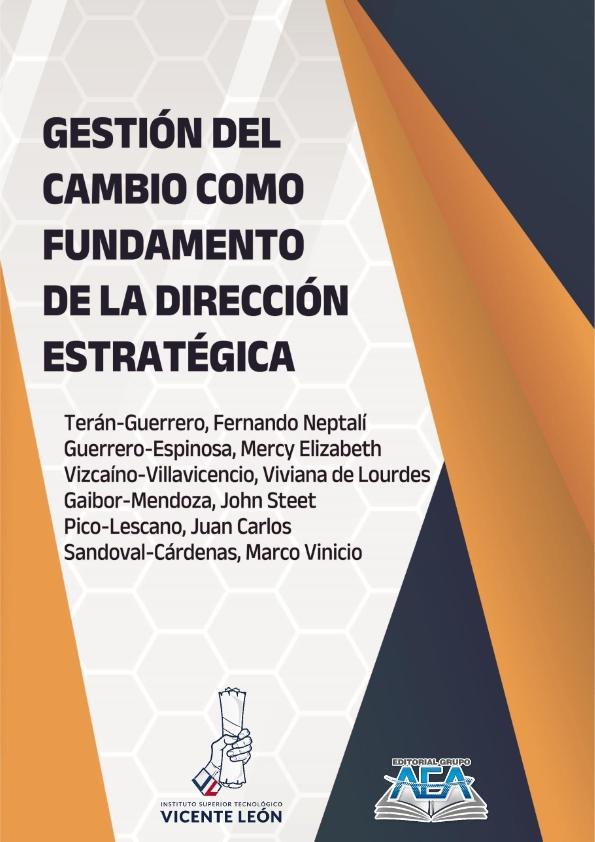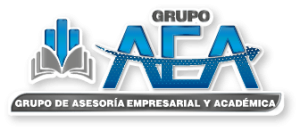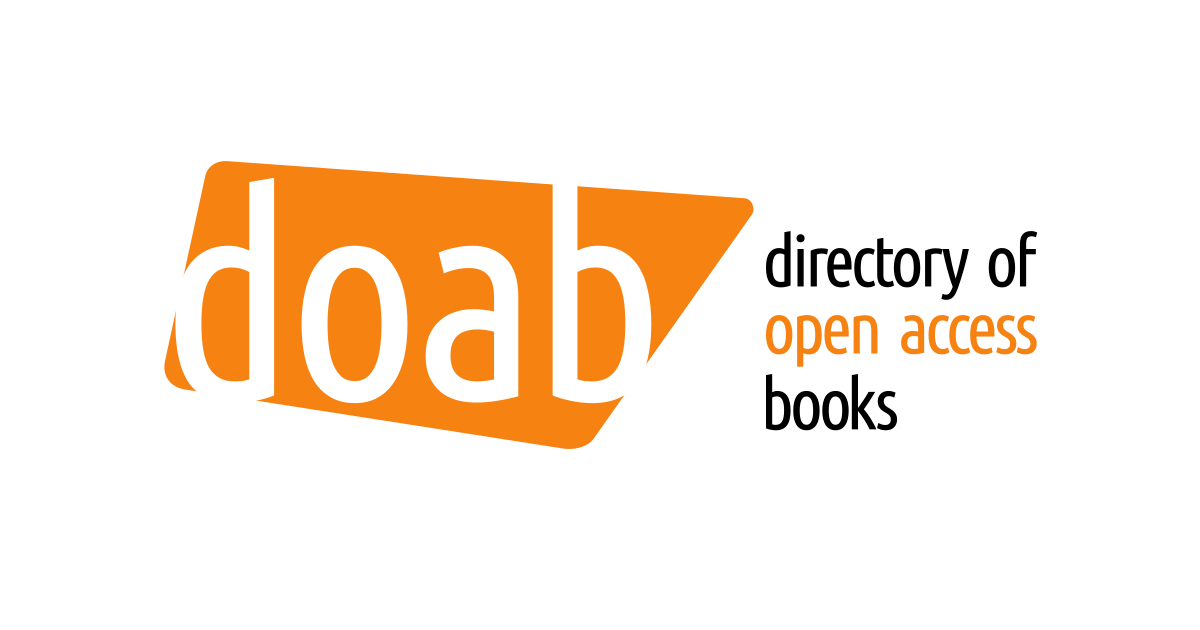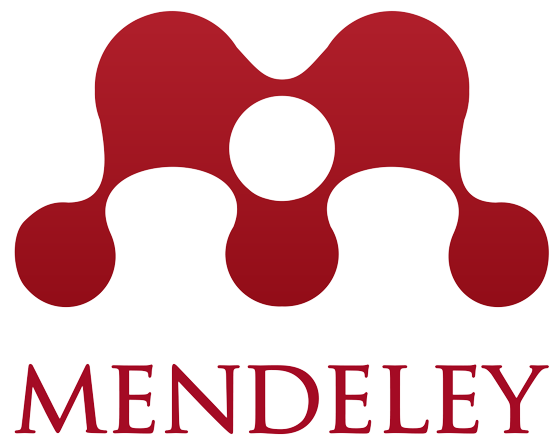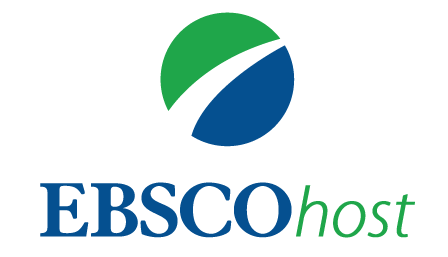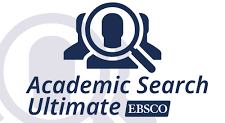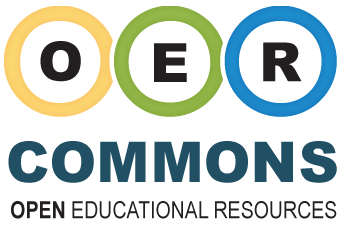Gestión del Cambio como Fundamento de la Dirección Estratégica
Palabras clave:
Competencias Esenciales, Dirección Estratégica, Gestión del Cambio, Liderazgo, Toma de DecisionesSinopsis
El libro es una obra completa que examina la integración vital de la dirección estratégica y la gestión del cambio. El primer capítulo argumenta que el cambio estratégico es un componente crucial de la dirección estratégica, destacando la necesidad de anticipar y adaptarse a las fluctuaciones en el entorno de negocio. El segundo capítulo presenta la dirección estratégica como un modelo de cambio, subrayando la importancia de alinear la estrategia con la visión y los objetivos de la empresa para impulsar el cambio efectivo. El capítulo final analiza las competencias esenciales necesarias para la dirección estratégica, enfatizando en habilidades como el liderazgo, la toma de decisiones informada y la gestión de la incertidumbre. Esta obra es una guía esencial para aquellos que buscan comprender y aplicar efectivamente la gestión del cambio en un marco estratégico.
Citas
Aguilar, FJ (1967). Exploración del entorno empresarial. Nueva York: Macmillan.
Anand, G., & Kodali, R. (2008). Benchmarking the benchmarking models. Benchmarking: An International Journal.
Ansoff, H. I. (1987). Corporate strategy. A management classic. Penguin Books.
Armenakis, A., & Bedeian, A. (1999). Organizational change: A review of theory and research in the 1990s. Journal of Management, 25(3), 293–315. doi:10.1177/014920639902500303
Armstrong, M., & Baron, A. (2005). Managing performance: performance management in action. Chartered Institute of Personnel and Development.
Aven, T. (2016). Risk assessment and risk management: Review of recent advances on their foundation. European Journal of Operational Research, 253(1), 1-13.
Becker, B. E., Huselid, M. A., & Beatty, R. W. (2001). The Workforce Scorecard: Managing Human Capital to Execute Strategy. Harvard Business Press.
Beckhard, R., & Harris, R. T. (1987). Organizational transitions: Managing complex change. Addison-Wesley.
Bennis, W. (1997). Organizing Genius: The Secrets of Creative Collaboration. Addison-Wesley.
Bennis, W. G., & Thomas, R. J. (2002). Crucibles of Leadership. Harvard Business Review.
Berlo, D. K. (1960). The process of communication. Holt, Rinehart, & Winston.
Blank, S. (2013). The Startup Owner's Manual: The Step-By-Step Guide for Building a Great Company. K&S Ranch.
Boardman, A. E., Greenberg, D. H., Vining, A. R., & Weimer, D. L. (2017). Cost-Benefit Analysis: Concepts and Practice. Cambridge University Press.
Bodie, G. D., Vickery, A. J., Cannava, K., & Jones, S. M. (2015). The role of "active listening" in informal helping conversations: Impact on perceptions of listener helpfulness, sensitivity, and supportiveness and discloser emotional improvement. Western Journal of Communication, 79(2), 151-173.
Bogan, CE & English, MJ (1994). Benchmarking para las mejores prácticas: ganar a través de la adaptación innovadora. McGraw-Hill, Inc.
Bologna, G., & Menguzzato, M. (1992). La Dirección Estratégica de la Empresa. Editorial Ariel.
Bonn, I. (2005). Improving strategic thinking: a multilevel approach. Leadership & Organization Development Journal.
Boyatzis, R. 1982. The competent manager: A model for effective performance. Wiley.
Bridges, W. (2009). Managing transitions: Making the most of change. Da Capo Lifelong Books.
Bryson, J. M. (2018). Strategic Planning for Public and Nonprofit Organizations: A Guide to Strengthening and Sustaining Organizational Achievement. Wiley.
Buchanan, D., & Badham, R. (2008). Power, politics, and organizational change: Winning the turf game. SAGE Publications.
Burke, W. W. (2017). Organization change: Theory and practice. Sage Publications.
Burnes, B. (2004). Managing change: A strategic approach to organizational dynamics. Pearson Education.
Burnes, B. (2015). Understanding Resistance to Change – Building on Coch and French. Journal of Change Management, 15(2), 92-116.
Cameron, E., & Green, M. (2015). Making Sense of Change Management: A Complete Guide to the Models, Tools and Techniques of Organizational Change (4th ed.). Kogan Page.
Cameron, E., & Green, M. (2019). Making sense of change management: A complete guide to the models, tools and techniques of organizational change. Kogan Page Publishers.
Camp, R. C. (1989). Benchmarking: The Search for Industry Best Practices that Lead to Superior Performance. ASQC Quality Press.
Camp, R. C. (1995). Benchmarking: The Search for Industry Best Practices that Lead to Superior Performance. ASQC Quality Press.
Carr, N. G. (2003). IT Doesn’t Matter. Harvard Business Review.
Cascio, W. F. (2018). Managing human resources: Productivity, quality of work life, profits. McGraw-Hill Education.
Chandler, A. D. (1962). Strategy and Structure: Chapters in the History of the Industrial Enterprise. MIT Press.
Christensen, C. M. (1997). The Innovator's Dilemma: When New Technologies Cause Great Firms to Fail. Harvard Business School Press.
Clearpoint Strategy. (2022). 10 Qualities Of A Good Strategic Leader. Retrieved May 23, 2023, from http://www.clearpointstrategy.com/blog/10-qualities-of-a-good-strategic-leader/
Cohen, M. D., March, J. G., & Olsen, J. P. (1972). A garbage can model of organizational choice. Administrative science quarterly, 1-25.
Cooperrider, D. L., & Srivastva, S. (1987). Appreciative inquiry in organizational life. In Research in organizational change and development, 1, 129-169). JAI Press.
Cooperrider, D. L., Whitney, D., & Stavros, J. M. (2008). Appreciative inquiry handbook: For leaders of change. Crown Custom Publishing, Inc.
Crosby, P. B. (1979). Quality is free: The art of making quality certain. New York: McGraw-Hill.
Cubillo, J. M., Sánchez, J., & Cerviño, J. (2006). International students' decision-making process. International Journal of Educational Management, 20(2), 101-115. https://doi.org/10.1108/09513540610646091
Cuervo García, A. (1995). La dirección estratégica de la empresa. En: Dirección de empresas de los noventa. Homenaje al profesor Marcial-Jesús López Moreno. Civitas.
Cummings, T. G., & Worley, C. G. (2014). Organization development and change. Cengage learning.
Dalkey, N., & Helmer, O. (1963). An experimental application of the DELPHI method to the use of experts. Management science, 9(3), 458-467.
Dance, F. E. (1967). A Helical Model of Communication. In F. E. Dance (Ed.), Human Communication Theory, p. 196-205.
Davenport, T. H. (1990). Process innovation: Reengineering work through information technology. Harvard Business School Press.
Davenport, T. H., & Bean, R. (2021). La organización impulsada por IA: aproveche el poder de la IA para transformar su negocio. Harvard Business Review.
Davenport, T. H., & Harris, J. G. (2007). Competing on Analytics: The New Science of Winning. Harvard Business School Press.
Davenport, T. H., & Short, J. E. (1990). The new industrial engineering: Information technology and business process redesign. Sloan Management Review, 31(4), 11-27.
David, F.R., y David, F.R. (2017). Gestión estratégica: un enfoque de ventaja competitiva, Conceptos (16ª ed.). Pearson
Dawson, P. (1994). Cambio Organizacional: Un Enfoque Procesal. Editorial Paul Chapman.
De Vito, J. A. (2013). The interpersonal communication book. Pearson.
de Vries, R. E., Bakker-Pieper, A., & Oostenveld, W. (2010). Leadership = Communication? The Relations of Leaders’ Communication Styles with Leadership Styles, Knowledge Sharing and Leadership Outcomes. Journal of Business and Psychology, 25(3), 367-380. https://doi.org/10.1007/s10869-009-9140-2
Delbecq, A. L., & Van de Ven, A. H. (1971). A group process model for problem identification and program planning. Journal of Applied behavioral Science.
Deming, W. E. (1986). Out of the Crisis. MIT Center for Advanced Engineering Study.
Deming, W. E. (2000). The New Economics for Industry, Government, Education. MIT press.
Dent, E. B., & Goldberg, S. G. (1999). Challenging “Resistance to Change”. The Journal of Applied Behavioral Science, 35(1), 25-41.
Dessler, G. (2015). Human Resource Management (14th ed.). Pearson.
Drucker, P. (1993). Post-Capitalist Society. HarperBusiness.
Drucker, P. (2008). The Essential Drucker. HarperCollins.
Drucker, P. F. (1999). Knowledge-Worker Productivity: The Biggest Challenge. California Management Review, 41(2), 79–94
Drury, C. (2018). Cost and Management Accounting: An Introduction (8th ed.). Cengage Learning.
Du, S., Swaen, V., Lindgreen, A., & Sen, S. (2013). The Roles of Leadership Styles in Corporate Social Responsibility. Journal of Business Ethics, 114(1), 155-169. https://doi.org/10.1007/s10551-012-1333-3
Dunphy, D., & Stace, D. (1993). The strategic management of corporate change. Human Relations, 46(8), 905–920.
Eagly, A. H., & Johnson, B. T. (1990). Gender and leadership style: A meta-analysis. Psychological Bulletin, 108(2), 233-256. https://psycnet.apa.org/doi/10.1037/0033-2909.108.2.233
Eisenhardt, K. M., & Bingham, C. B. (2014). Accelerating Adaptation: The Evolution of a Superior Organizational Solution. Strategic Management Journal, 35(12), 1767-1787.
Eisenhardt, K. M., & Zbaracki, M. J. (1992). Strategic decision making. Strategic management journal, 13(S2), 17-37.
Fahey, L., & Randall, R. M. (1998). Learning from the Future: Competitive Foresight Scenarios. Wiley.
Flamarique, S. (2019). Manual de gestión de almacenes. Marge books.
Ford, J. D., Ford, L. W., & D'Amelio, A. (2008). Resistance to change: The rest of the story. Academy of management Review, 33(2), 362-377.
Fragozo, D. J. M., Daza, B. C. O., & Contreras, J. D. R. L. (2017). Innovación tecnológica como herramienta gerencial para el desarrollo organizacional. Boletín Redipe, 6(4), 160-169.
French, W. L., & Bell, C. H. (1999). Organization Development: Behavioral Science Interventions for Organization Improvement. Prentice Hall.
Galpin, T. J. (1996). The human side of change: A practical guide to organization redesign. Jossey-Bass).
García, S., & Dolan, S. L. (2018). El cambio estratégico en las organizaciones: implicaciones para la dirección de recursos humanos. Management y Organizaciones, 2(1), 1-15.
Goetsch, D. L., & Davis, S. B. (2014). Quality management for organizational excellence. Pearson.
González, F. (2008). La planificación estratégica de recursos humanos. Revista de administración pública.
Goodwin, P., & Wright, G. (2014). Decision analysis for management judgment. John Wiley & Sons.
Grant, R. M. (2016). Contemporary Strategy Analysis: Text and Cases Edition. John Wiley & Sons.
Grunig, J. E. (Ed.). (2013). Excellence in public relations and communication management. Routledge.
Gupta, A. K., Smith, K. G., & Shalley, C. E. (2016). The Interplay between Exploration and Exploitation. Academy of Management Journal, 49(4), 693-706.
Hamel, G. (2003). The Future of Management. Boston: Harvard Business School Press
Hamel, G., & Prahalad, C. K. (1994). Competing for the Future. Harvard Business Review Press.
Hamel, G., & Prahalad, C. K. (1994). Competing for the Future. Harvard Business School Press.
Hammer, M., & Champy, J. (1993). Reengineering the Corporation: A Manifesto for Business Revolution. Harper Business.
Heizer, J., Render, B., & Munson, C. (2016). Principles of Operations Management: Sustainability and Supply Chain Management. Pearson.
Hernandez, A. V., Zainos, A., & Romo, R. (2002). Temporal Evolution of a Decision-Making Process in Medial Premotor Cortex. Neuron, 33(6), 959-972. https://doi.org/10.1016/S0896-6273(02)00613-X
Herzberg, F. (1966). Work and the Nature of Man. World Publishing.
Hiatt, J. (2006). ADKAR: a model for change in business, government and our community. Prosci Learning Center Publications.
Hill, C., Jones, G., & Schilling, M. (2014). Strategic Management: Theory: An Integrated Approach. Cengage Learning.
Hill, T., & Westbrook, R. (1997). SWOT analysis: it's time for a product recall. Long range planning, 30(1), 46-54.
Hitt, M. A., Ireland, R. D., & Hoskisson, R. E. (2021). Administración. Estratégica: Competitividad y Globalización. Conceptos y Casos. Cengage Learning.
Hrebiniak, L.G. (2013). Making Strategy Work: Leading Effective Execution and Change. Upper Saddle River, NJ: FT Press.
Huczynski, A., & Buchanan, D. (2013). Organizational behaviour. Pearson education.
Ishikawa, K. (1985). What is total quality control? The Japanese way. Prentice-Hall, Inc.
Ishikawa, K., & Loftus, J. H. (1990). Introduction to Quality Control. Tokyo: 3A Corporation.
Jacobs, F. R., Chase, R. B., & Lummus, R. R. (2014). Operations and Supply Chain Management. McGraw-Hill.
Jarzabkowski, P., & Lê, J. K. (2010). Strategy-as-Practice: An Activity-Based Approach. In D. Golsorkhi, L. Rouleau, D. Seidl & E. Vaara (Eds.), Cambridge Handbook of Strategy as Practice (pp. 127-141). Cambridge: Cambridge University Press.
Johnson, G. (2017). Gestión estratégica: conceptos y casos (15ª ed.). Pearson.
Johnson, G., & Brown, S. (2012). Management Accounting: Strategic Management Accounting. In C. Chapman, A. Hopwood, & M. Shields (Eds.), Handbook of Management Accounting Research, 3, 755-771). Elsevier.
Johnson, M. (2021). The Future Leader: 9 Skills and Mindsets to Succeed in the Next Decade. Wiley.
Jones, GR (2010). Teoría organizacional, diseño y cambio. Pearson.
Juran, J. M., & De Feo, J. A. (2016). Juran's Quality Handbook: the complete guide to performance excellence. McGraw-Hill Education.
Juran, J. M., & Godfrey, A. B. (1999). Juran's Quality Handbook. McGraw-Hill.
Kaplan, R. S., & Norton, D. P. (2008). Execution premium: Linking strategy to operations for competitive advantage. Harvard Business Press.
Kaplan, R. S., Norton, D. P., & Rugelsjoen, B. (2010). Managing alliances with the balanced scorecard. Harvard Business Review, 88(1-2), 114-120.
Keeney, R. L. (1982). Decision analysis: an overview. Operations Research, 30(5), 803-838.
Kim, W. C., & Mauborgne, R. (2015). Blue Ocean Strategy: How to Create Uncontested Market Space and Make the Competition Irrelevant. Boston: Harvard Business Review Press.
Kirkwood, CW (1997). Toma de decisiones estratégicas. Duxbury Press.
Kotler, P., & Armstrong, G. (2017). Principios de Marketing (17ª ed.). Pearson.
Kotler, P., Keller, K. L., Brady, M., Goodman, M., & Hansen, T. (2019). Marketing Management (15th ed.). Pearson.
Kotter, J. P. (1990). A Force for Change: How Leadership Differs from Management. Free Press.
Kotter, J. P. (1995). Leading Change: Why Transformation Efforts Fail. Harvard Business Review, 73(2), 59–67.
Kotter, J. P. (2012). Leading change. Harvard Business Press.
Kotter, J. P., & Schlesinger, L. A. (2008). Choosing strategies for change. Harvard Business Review, 86(7/8), 130-139.
Kouzes, J. M., & Posner, B. Z. (2012). The leadership challenge: How to make extraordinary things happen in organizations. San Francisco, CA: Jossey-Bass.
Kübler-Ross, E. (1969). On Death and Dying. Macmillan.
Kuhn, T. S. (1962). The structure of scientific revolutions. University of Chicago press.
Kumar, S., & Chandra, C. (2001). Enhancing the effectiveness of benchmarking in manufacturing organizations. Industrial Management & Data Systems.
Lasswell, H. D. (1948). The Structure and Function of Communication in Society. The Communication of Ideas. Institute for Religious and Social Studies, p. 37).
Leonard-Barton, D. (1995). Wellsprings of Knowledge: Building and Sustaining the Sources of Innovation. Harvard Business School Press.
Lewin, K. (1947). Frontiers in group dynamics: Concept, method and reality in social science; social equilibria and social change. Human relations, 1(1), 5-41.
Lewin, K. (1951). Field Theory in Social Science: Selected Theoretical Papers. Harper & Brothers.
Liddell, H. G., & Scott, R. (1940). A Greek-English Lexicon. Oxford: Clarendon Press.
Liedtka, J. (1998). Strategic thinking: Can it be taught? Long Range Planning, 31(1), 120-129.
Lindblom, C. E. (1959). The science of" muddling through". Public administration review, 19(2), 79-88.
Lynch, R. (2012). Strategic Management (6th ed.). Harlow, England: Pearson.
Manes, F., Sahakian, B. J., Clark, L., Rogers, R. D., Antoun, N. M., Aitken, M. D., & Robbins, T. W. (2002). Decision-making processes following damage to the prefrontal cortex. Brain, 125(3), 624-639. https://doi.org/10.1093/brain/awf049
McKeown, G. (2022). Sin esfuerzo: haga que sea más fácil hacer lo que más importa. Currency.
Miller, K. (2015). Organizational communication: Approaches and processes. Nelson Education.
Mintzberg, H. (1979). The Structuring of Organizations. Prentice-Hall.
Mintzberg, H. (1994). The Rise and Fall of Strategic Planning. New York: Free Press
Mintzberg, H., Ahlstrand, B., & Lampel, J. (1998). Strategy safari: A guided tour through the wilds of strategic management. New York: The Free Press.
Mintzberg, H., Ahlstrand, B., & Lampel, J. (2018). Strategy Safari: A Guided Tour Through The Wilds of Strategic Management. Simon and Schuster.
Mintzberg, H., Raisinghani, D., & Theoret, A. (1976). The structure of "unstructured" decision processes. Administrative Science Quarterly, 21(2), 246-275.
Morgan, G. (2006). Images of organization. Sage.
Nadler, D. A., & Tushman, M. L. (1995). Types of organizational change: From incremental improvement to discontinuous transformation. In D. A. Nadler, R. B. Shaw, A. E. Walton (Eds.), Discontinuous change: Leading organizational transformation (pp. 19-33). Jossey-Bass.
Nava, J. A. G., & Hernández, L. M. P. (2014). Estrategias financieras empresariales. Grupo Editorial Patria.
Noe, R. A., Hollenbeck, J. R., Gerhart, B. A., & Wright, P. M. (2017). Fundamentals of human resource management (7th ed.). McGraw-Hill Education.
Northouse, P. G. 2021. Leadership: Theory and practice (9a ed). Sage Publications.
Nunamaker, J. F., Briggs, R. O., & Mittleman, D. D. (2015). Information systems for virtual collaboration: Destiny or disaster?. Information Systems Journal, 25(2), 79-106.
Nutt, P. C. (1998). Evaluating alternatives to make a strategic choice. Omega, 26(1), 75-88.
Oakland, J. S. (2014). Total quality management and operational excellence: text with cases. Routledge.
Oreg, S. (2003). Resistance to change: Developing an individual differences measure. Journal of Applied Psychology, 88(4), 680-693.
Oreg, S., Vakola, M., & Armenakis, A. (2011). Change Recipients’ Reactions to Organizational Change: A 60-Year Review of Quantitative Studies. The Journal of Applied Behavioral Science, 47(4), 461–524.
O'Reilly, C. A., & Tushman, M. L. (2004). The Ambidextrous Organization. Harvard Business Review, 82(4), 74–81.
Orton, L., Lloyd-Williams, F., Taylor-Robinson, D., O'Flaherty, M., & Capewell, S. (2011). The Use of Research Evidence in Public Health Decision Making Processes:Systematic Review. PLoS ONE, 6(7), e21704. https://doi.org/10.1371/journal.pone.0021704
Osgood, C. E., & Schramm, W. (1954). Process of Abstracting: From the Empirical Standpoint. Stanford University Press.
Osterwalder, A., & Pigneur, Y. (2010). Business Model Generation: A Handbook for Visionaries, Game Changers, and Challengers. Wiley.
Pande, PS, Neuman, RP & Cavanagh, RR (2000). The Six Sigma Way: cómo GE, Motorola y otras empresas importantes están perfeccionando su desempeño. McGraw-Hill, Inc.
Peng, M. W. (2020). Estrategia Global (3ra ed.). Cengage Learning.
Peppard, J., & Rowland, P. (2005). The essence of business process reengineering. Prentice Hall.
Peteraf, M. A., & Barney, J. B. (2003). Unraveling the resource‐based tangle. Managerial and Decision Economics, 24(4), 309-323.
Peters, T. J., & Waterman, R. H. (1982). In Search of Excellence: Lessons from America's Best-Run Companies. Harper & Row.
Piderit, S. K. (2000). Rethinking resistance and recognizing ambivalence: A multidimensional view of attitudes toward an organizational change. Academy of management review, 25(4), 783-794).
Porter, M. E. (2008). Estrategia competitiva: técnicas para analizar industrias y competidores (1ª ed.). Free Press.
Porter, M. E. (1985). Competitive Advantage: Creating and Sustaining Superior Performance. Free Press.
Powell, T. C. (1995). Total Quality Management as Competitive Advantage: A Review and Empirical Study. Strategic Management Journal, 16(1), 15-37.
Pretell Vidal, G. (2023). Marketing: Una herramienta para el crecimiento (2a ed.). Ediciones Díaz de Santos.
Puranam, P., & Singh, H. (2012). The architecture of high-performing organizations: A managerial tour. Business Horizons, 55(3), 301-311.
Quinn, J. B. (1996). Deep Change: Discovering the Leader Within. San Francisco: Jossey-Bass
Raelin, J. (2020). Leadership as Practice: Theory and Application. Routledge.
Rey Peña, C. (2007). Dirección estratégica y creación de valor. Revista de Empresa, 16, 6-17
Robbins, S. P. (2013). Organizational behavior. Pearson.
Robbins, S. P., & Coulter, M. (2017). Fundamentos de Administración. Pearson.
Robbins, S. P., & Judge, T. A. (2017). Comportamiento organizacional (17ª ed.). Pearson.
Robbins, S. P., Coulter, M., & DeCenzo, D. A. (2017). Fundamentals of management. Pearson.
Robles, M. M. (2012). Executive Perceptions of the Top 10 Soft Skills Needed in Today's Workplace. Business Communication Quarterly, 75(4), 453-465.
Rodríguez, J. M., & Pérez, M. (2017). Factores que influyen en la participación en el cambio estratégico: un análisis de la literatura. Revista de Dirección y Estrategia, 1(1), 15-29).
Rogers, D. S., & Tibben-Lembke, R. S. (2015). Going Backwards: Reverse Logistics Trends and Practices (2nd ed.). Reverse Logistics Association.
Rohrbeck, R., & Hage, J. (2008). Strategic Foresight in Multinational Companies: Building a Best-practice Framework from Lessons Learned. Futures, 40(2), 141-156.
Rotemberg, J. J., & Saloner, G. (1993). Leadership Style and Incentives. Management Science, 39(11), 1299-1318. https://doi.org/10.1287/mnsc.39.11.1299
Rumelt, R. (2011). Good Strategy/Bad Strategy: The difference and why it matters. Crown Business
Saaty, T. L. (1980). The Analytic Hierarchy Process. McGraw-Hill.
Sánchez, J. I., & Levi, M. (2001). Understanding the role of the competency concept in HR management. In Understanding human resource development: a research-based approach. Routledge.
Schein, E. H. (2010). Organizational Culture and Leadership (4th ed.). Jossey-Bass.
Schoemaker, P. J. H., Heaton, S., & Teece, D. (2018). Innovation, dynamic capabilities, and leadership. California Management Review, 61(1), 15-42.
Schramm, W. (1954). How Communication Works. In W. Schramm (Ed.), The process and effects of communication, p. 3-26.
Senge, P. M. (1990). The Fifth Discipline: The Art & Practice of The Learning Organization. Currency Doubleday.
Shannon, C. E., & Weaver, W. (1949). The mathematical theory of communication. University of Illinois press).
Shepherd, D. A. (2015). Party On! A call for entrepreneurship research that is more interactive, activity based, cognitively hot, compassionate, and prosocial. Journal of Business Venturing, 30(4), 489-507).
Simon, H. A. (1955). A behavioral model of rational choice. The quarterly journal of economics, 69(1), 99-118.
Simon, H. A. (1977). The New Science of Management Decision. Prentice-Hall.
Simons, R. (1995). Levers of Control: How Managers Use Innovative Control Systems to Drive Strategic Renewal. Harvard Business School Press.
Slack, N., Chambers, S., & Johnston, R. (2013). Operations Management. Pearson.
Smith, J. (2010). Strategic Planning for Public and Nonprofit Organizations: A Guide to Strengthening and Sustaining Organizational Achievement (4th ed.). Wiley.
Solomon, M. R., Dahl, D. W., White, K., Zaichkowsky, J. L., & Polegato, R. (2019). Consumer Behavior: Buying, Having, and Being (13th ed.). Pearson.
Spencer, L. M., & Spencer, S. M. (1993). Competence at Work: Models for Superior Performance. John Wiley & Sons.
Sun Tzu (2002). The Art of War. (L. Giles, Trans.). New York: Barnes & Noble Classics. Original work published circa 500 B.C.
Teece, D. J., Pisano, G., & Shuen, A. (1997). Dynamic Capabilities and Strategic Management. Strategic Management Journal, 18(7), 509-533.
Thompson, A., Peteraf, M., Gamble, J., & Strickland, A. J. (2020). Crafting and executing strategy: The quest for competitive advantage: Concepts and cases. McGraw-Hill Education.
Treacy, M., & Wiersema, F. (1993). Customer Intimacy and Other Value Disciplines. Harvard Business Review, 71(1), 84-93.
Ulrich, D., & Smallwood, N. (2007). Building a leadership brand. Harvard Business Review.
Vázquez, J. L., Nistal, M. L., & Paredes, G. R. (2019). Gestión del cambio estratégico en las organizaciones: revisión sistemática de la literatura y agenda de investigación. Contaduría y Administración, 64(1), 1-23).
Venkatesh, V., Morris, M. A., & Ackerman, P. L. (2000). A Longitudinal Field Investigation of Gender Differences in Individual Technology Adoption Decision-Making Processes. Organizational Behavior and Human Decision Processes, 83(1), 33-60. https://doi.org/10.1006/obhd.2000.2896
Vinkenburg, C. J., van Engen, M. L., Eagly, A. H., & Johannesen-Schmidt, M. C. (2011). An exploration of stereotypical beliefs about leadership styles: Is transformational leadership a route to women's promotion? The Leadership Quarterly, 22(1), 10-21. https://doi.org/10.1016/j.leaqua.2010.12.003
Ward, J., & Peppard, J. (2002). Strategic planning for information systems (3rd ed.). John Wiley & Sons.
Waterman, R. H., Peters, T. J., & Phillips, J. R. (1980). Structure Is Not Organization. Business Horizons, 23(3), 14–26.
Watson, GH (2015). Evaluación comparativa estratégica recargada con Six Sigma: mejore el rendimiento de su empresa utilizando las mejores prácticas globales. John Wiley & Sons.
Weick, K. E., & Quinn, R. E. (1999). Organizational change and development. Annual Review of Psychology, 50(1), 361-386.
Westley, B. H., & MacLean Jr, M. S. (1957). Conceptual model for communications research. Journalism quarterly, 34(1), 31-38.
Whittington, R. (2007). Strategy practice and strategy process: family differences and the sociological eye. Organization Studies, 28(10), 1575-1586.
Yukl, G. (2013). Leadership in organizations (8th ed.). Pearson.
Publicado
Licencia
Esta obra está bajo una licencia internacional Creative Commons Atribución-NoComercial-CompartirIgual 4.0.
